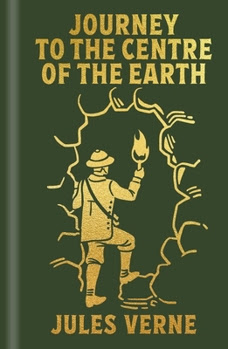In December 1959, my parents took me to see my first movie on the big screen. In Easthampton, New York, the only cinema in town opened its doors to Journey to the Center of the Earth, released by Twentieth Century Fox and based on the 1867 tale by French author Jules Verne.
The theater had an actual chandelier and organ, and murals were painted on the walls and ceilings. At age six, it was the largest building I had ever seen.
The lights dimmed, the movie began, and I experienced magic.
If you have yet to see the film, Sir Oliver Lindenbrook of Edenborough discovers an ancient artifact from Icelandic explorer Arne Saknussemm relating his travels to the center of the Earth. Determined to repeat the feat, Lindenbrook, accompanied by his admiring student, Alec McEwan, makes their way to Iceland. Continuing with the Wikipedia entry:
Professor Göteborg, upon receiving correspondence from Lindenbrook attempts to reach the Earth’s center first. Lindenbrook and McEwan chase him to Iceland. There, Göteborg and his assistant kidnap and imprison them in a cellar. They are freed by local Hans Bjelke and his pet duck, Gertrud. They later find Göteborg dead in his hotel room. Lindenbrook finds potassium cyanide crystals in Göteborg’s goatee and concludes that he was murdered.Göteborg’s widow, Carla, who initially believed Lindenbrook was trying to capitalize on her deceased husband’s work, learns the truth. She provides the equipment and supplies that her husband had accumulated, but only on the condition that she accompanies them to protect her husband’s reputation. Lindenbrook grudgingly agrees. Hans and Gertrud also join the new expedition.On a specific date, they mark the sunrise’s exact location on Snæfellsjökull and descend into the Earth following markings left by Saknussemm. However, they are not alone. Göteborg’s murderer, Count Saknussemm, believes that, as Saknussemm’s descendant, only he has the right to be there.
My memory of that film is reduced to three specific memories: the discovery of the crystal cavern, the massive whirlpool in the inner sea that traps the explorers’ raft, and the dinosaur they encounter in Atlantis as they try to escape to the surface.
Around the age of twelve, I discovered the book the movie was based on in my school’s library. In the book, Sir Oliver S. Lindenbrook is Verne’s Professor Otto Lidenbrock, a garrulous, temperamental professor in Hamburg, Germany. Alec McEwan is actually Lindenbrook’s nephew, Alex. The story starts with a small scrap of paper dropping out of a newly purchased book of ancient antiquity, which reads:
Go down into the crater of Snaefells Jökull, which Scartaris’s shadow caresses just before the calends of July, O daring traveler, and you’ll make it to the center of the Earth. I’ve done so. Arne Saknussemm
On this flimsy evidence, the duo travels to Iceland and hires a guide, Icelander Hans Bjelke, a Danish-speaking eider duck hunter. After discovering the entrance to the center of the Earth, they begin their journey. All the film’s other characters are gone, including the eider duck, Gertrude. In the novel, the three endure great danger until they encounter a vast internal sea. Gone is Atlantis, but like the movie, our brave adventurers eventually are blown out of an active volcano in Italy and return home to great accolades.
I read the book times beyond counting, joining H.G. Wells’s War of the Worlds and Lewis Caroll’s Alice in Wonderland and Through the Looking Glass as beloved rereads in my well-read childhood.
The movie and the book awakened a sense of wonder, which caused a lifelong fascination with science, pulp fiction, dinosaurs, and spelunking. But “when I became a man, I put away childish things,” and I never reread Jules Verne’s masterpiece after I surrendered to the complex realities of adulthood.
That is until a month ago. When wandering in a bookstore, I found a small tome that bore the book title I had put aside decades ago. On a sudden impulse, I paid for my purchase and once again explored the inner Earth’s lava tubes and limestone caverns. With my three guides, I again experienced the terrors of being lost and endured hunger and thirst in the quest for adventure, as well as the wonder of the inner sea, dangerous dinosaurs, and the horror of being blown out of the lava-choked throat of a volcano.
I assume that in my seventh decade of life, I will once again give way to the temptation to repeat my obsession with Verne’s brave trio as they plunge into the depths of the Earth. As I own the film’s DVD, I will also have the opportunity to relive a significant childhood event.
However, the film and novel made one other impact on my life. Wanting to experience my own adventures, I eventually became a writer so I could live through my literary creations. Some of you have read my work, to which I can only say:



No comments:
Post a Comment